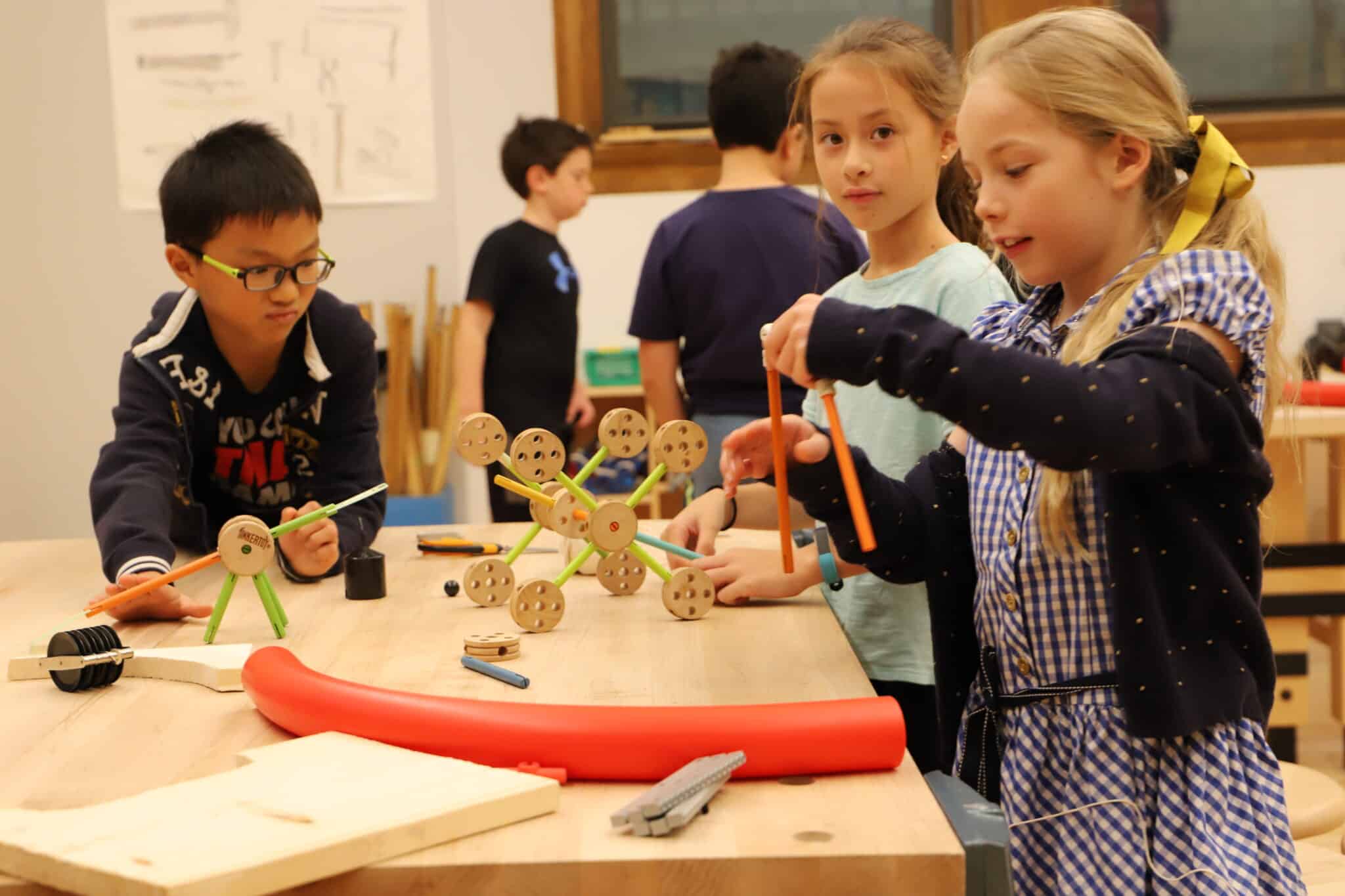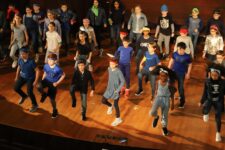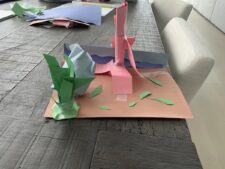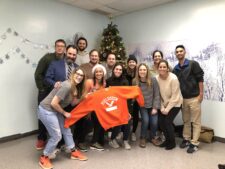In early October, Lan Heng, Computer Teacher; Leonard White, Shop Teacher; and Phillip Bettencourt, Music Teacher, gathered the entire 5th Grade class at Ethical Culture to introduce a new project: a Rube Goldberg-style chain-reaction machine. The project, though, had a twist. In a traditional Rube Goldberg machine, an object moves through a complicated series of motions with the end goal of performing a simple task, like opening a bottle or dispensing a piece of candy. In the 5th Graders’ iteration, though, the motions themselves would be the focus.
Heng, White, and Bettencourt noticed how the movement of inanimate objects can suggest a narrative: a ball colliding with a wooden block could represent a superhero attacking a villain or a child fighting a dragon. In this way, with a bit of imagination, a chain-reaction machine could narrate the various events in a story. “We thought we would make [the project] more interesting,” says Heng.

It’s unexpected, it’s interdisciplinary, and it’s the Ethical Culture Fieldston School at its best: bringing together faculty from across departments to create a unique learning experience for our students.
From Stage to Storyboard: Ethical Culture 5th Graders at Work
To kick off the project, Heng, White, and Bettencourt gathered 5th Graders in a storytelling workshop. Students worked in pairs to construct storyboards, breaking them down into four parts: the set-up of the world and characters, the introduction of a conflict, the journey on which the characters embark in response to that conflict, and the resolution of the journey. Bettencourt encouraged his students to dream big by incorporating plenty of action and drama into their plots.
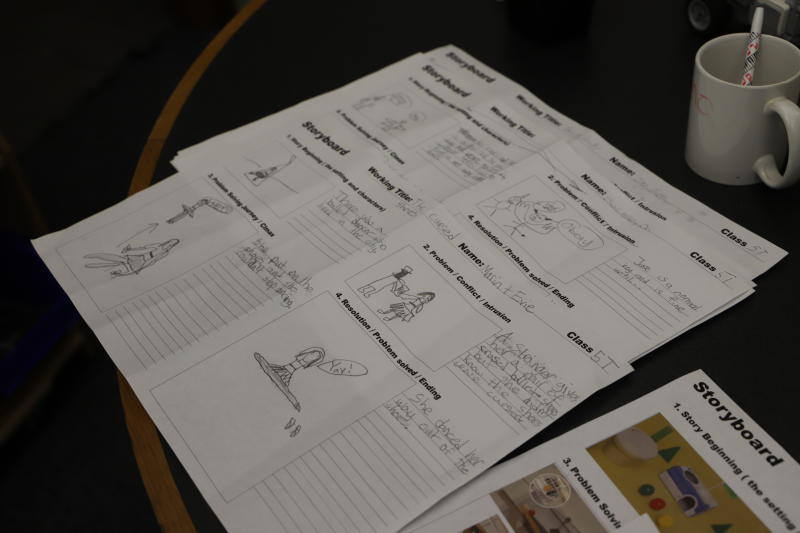
While drafting their storyboards, students considered various elements of an entertaining narrative. How do you make a character seem frightened or excited? How do you build suspense? As they pondered these questions, they drew upon skills they’d cultivated in their music and writing classes to create a compelling story.
By the end of their brainstorming session, each pair presented their idea to the larger group, and students voted on which stories to stage. The three teachers then stitched together parts of the most popular stories to help all members feel ownership of the project. In one group, students settled on the tale of a girl who survives a shipwreck, only to go on an underwater adventure before being united with her family.
Now comes the challenge of translating story to machine.
Combining Shop and Robotics
On a Tuesday afternoon, 5th Graders are tinkering with wooden contraptions in the freshly renovated shop room. Spread across the tables are various simple machines: a lever made of green and orange Tinkertoys, a pulley to which a paper cup has been secured with an electric blue pipe cleaner.
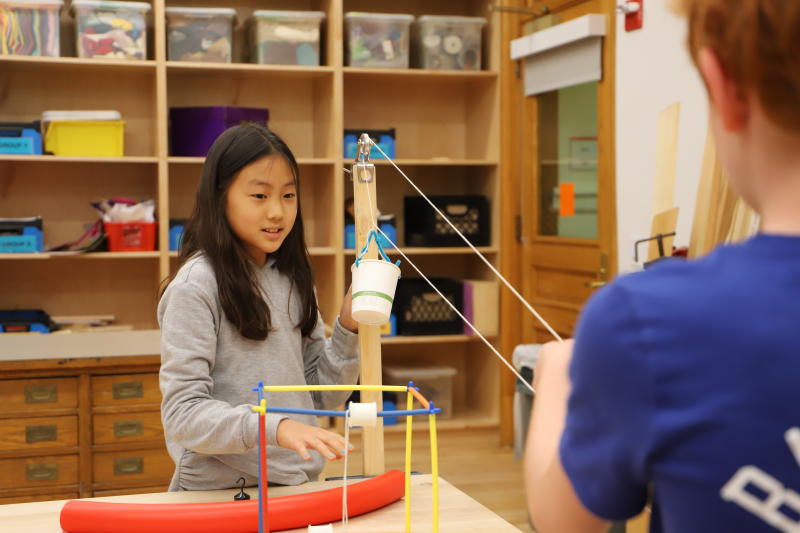
While straightforward by themselves, these devices come together to form more complicated apparatuses. A bicycle, for example, is essentially a series of wheels, axles, pulleys, and levers. “We talked about the idea of linking [simple machines] together to create a chain-reaction machine,” says White.
Meanwhile, in Heng’s class, students are beginning to familiarize themselves with robotics. In lieu of the Tinkertoys and paper cups are a couple dozen Lego Mindstorms EV3’s — programmable computer modules that can be affixed to other Lego blocks to make miniature vehicles, gauges, and other gadgets. Eventually, students will incorporate the EV3’s into their chain-reaction machines, using a motion sensor that detects the passing of another object, for example, to trigger the next step in the reaction.
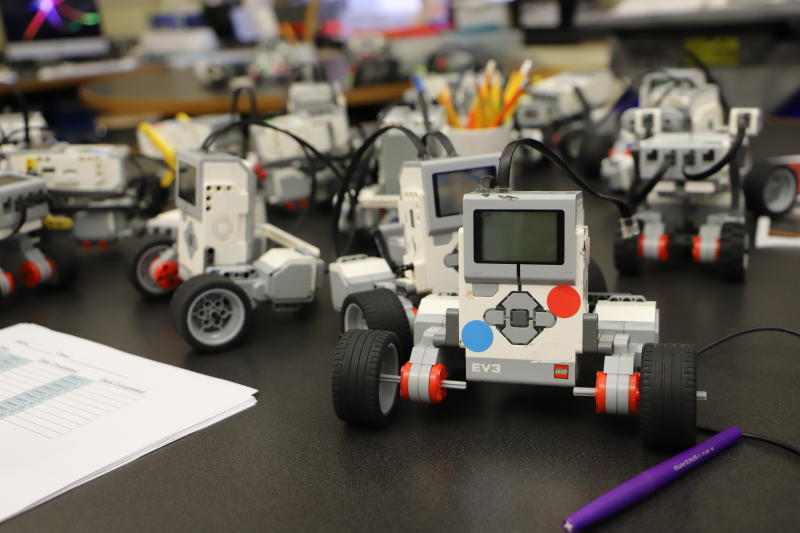
The ideal set-up will combine the simple machines of classical mechanics with the electronics of the modern age. “[White]’s building more mechanical machines and I’m doing more robotic ones,” says Heng, “and we’re trying to see how we can incorporate these two so we can make a storytelling machine.”
Now that the 5th Graders have established the basic structure of their stories, they will spend the next few weeks figuring out how to bring those stories to life. Using balls to represent the characters in their stories, they will decide how to depict a boy attacking a dragon, or a girl swimming through the ocean.
And The Story Goes On
It’s still early in the process, but Bettencourt, Heng, and White have already envisioned a culminating video that showcases the storytelling machines in action. As in a silent film, they hope to add in music, title cards, and sound effects to heighten the drama, bringing the unit back to the lessons of the storytelling workshop.
That may all change, of course. Part of what makes ECFS’ model of progressive education so empowering is its ability to respond to the interests of students. If students are particularly enamored of the building process, piecing blocks and mini-computers together to make elaborate contraptions, Bettencourt, Heng, and White may restructure their curriculum to allow students more time to do just that.
As Heng tidies up her classroom, she explains, “Our focus is really more on the problem-solving journey, how the machine is going to tell a story.”
The same could be said of this curricular unit: following 5th Graders along on a journey and seeing how they go about telling their stories.
